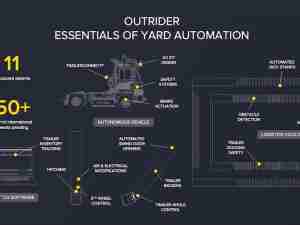NATSO, representing truckstops and travel plazas, and the American Trucking Associations (ATA) have urged state and local governments to carefully consider the operational differences of essential businesses when implementing social distancing guidelines to ensure that truckstops and travel plazas can safely serve commercial drivers without delaying the delivery of critical emergency relief supplies during the COVID-19 pandemic.
Truckstop workers and commercial truck drivers are included on the list of “essential critical infrastructure workers” by the Cybersecurity and Infrastructure Security Agency (CISA) in its “Guidance on the Essential Critical Infrastructure Workforce.” But many local officials are exceeding the Centers for Disease Control’s recommended social distancing guidelines and enforcing strict “occupancy limits” in travel centers, severely delaying commercial drivers when they stop for food or fuel.
Notably, some localities are enforcing occupancy limits of as few as 5-10 people, including employees. In certain parts of the country, this is resulting in drivers waiting in long lines to enter nearly empty truckstops in order to purchase food and use the facilities; this extends their delivery time for transporting goods in support of pandemic relief efforts.
Truck drivers have the ability to move through a truckstop while practicing safe social distancing. Truckstops and travel plazas frequently have a very large footprint and can average 28,000 square feet, giving them the ability to safely serve truck drivers within the six-feet social distancing guidelines issued by the Centers for Disease Control without imposing extreme caps on the number of customers in a location at one time.
“Varying interpretations of the CDC guidelines are creating exceedingly long wait times for truck drivers to buy food, use the facilities, and get back on the road, hindering their ability to deliver medical supplies or keep grocery store shelves stocked,” said NATSO President and CEO Lisa Mullings. “What should be 20 minute stops are turning into more than two hour layovers. It is imperative that local enforcement officials enforce occupancy caps in truckstops in a manner that adheres to CDC social distancing guidelines without unnecessarily disrupting the efficient movement of essential supplies throughout the country.”
NATSO and the American Trucking Associations expressed their concerns in a letter to the National Association of Counties; National Association of County and City Health Officials; the National League of Cities; and the United States Conference of Mayors.
“Each day during this pandemic, truck drivers are out on the road making critical deliveries to markets, hospitals and consumers – if local governments impede them from making those deliveries, they are putting lives at risk,” said ATA President and CEO Chris Spear. “We urge officials at all levels of government to help our industry keep those deliveries rolling by keeping facilities open and accessible for drivers to use in a safe and efficient manner.”







